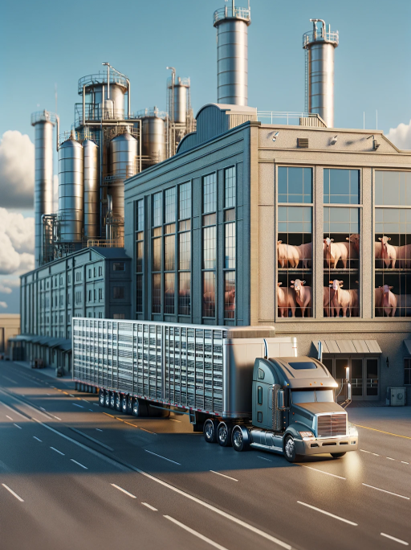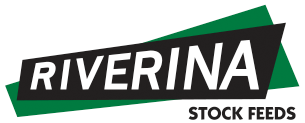Food Producer Mergers
Acquisition New Business ICT full Integration of new Operations

This client is one of the largest food producers with production facilities across Australia. When choosing to diversify and expand their operations, this client acquired factories and businesses across the country. These businesses whilst having some similarities operated very differently and needed someone with expertise to consult, advise and create the best plan to integration these businesses from an operational and practical perspective.
In the wake of the merger, the client's strategic integration of the new factory into its operations marked a significant feat in digital transformation. This seamless fusion of the two entities was not just a melding of operations but a visionary step towards setting a new precedent in the food production sector. Through a careful and methodical integration process, the company embraced the best of both worlds—merging the acquired entity's innovative processes with their own proven practices. The result was a technological renaissance that not only enhanced daily operations but also solidified the company's leadership position in the market.
The core of this successful integration was the implementation of advanced, adaptable technology that prioritized user engagement and dependability. It was a deliberate evolution, steering the company towards a future where change is the only constant. This approach has redefined industry standards, crafting an operational paradigm that is robust yet flexible, ensuring that the client remains well-equipped to navigate and thrive amidst the dynamic shifts of the agricultural landscape.


When this client acquired a new factory, the essence of the digital transformation lay in the harmonious integration of two disparate operational systems into one seamless enterprise. The meticulous merger was orchestrated through a phased approach, beginning with a thorough analysis of both the existing and newly acquired systems to identify synergies and gaps. Cross-functional teams from both entities were then assembled, fostering collaboration and knowledge exchange, which ensured that the integration upheld the best practices from each system.
The key to a seamless transition was the development of a unified digital platform that could bridge the different technologies and processes. Customized middleware was employed as an interlocutor, allowing for real-time data exchange and process alignment. This not only preserved the legacy of efficiency in the pre-existing systems but also leveraged the innovative features of the new factory's operations.
To mitigate the risk of operational disruption, the integration was executed incrementally, with continuous testing and feedback loops that allowed for agile adjustments. Employee training programs were integral to the strategy, ensuring that the workforce was adept at navigating the new combined system. By prioritizing data integrity, system compatibility, and user adaptability, the company achieved a digital transformation that expanded their capabilities without compromising on the operational excellence that was the hallmark of their success.
As the company embarked on the ambitious journey of merging two distinct entities, it became clear that the linchpin to a successful union would be in creating a unified data ecosystem. The first step in this digital metamorphosis was a comprehensive software assessment, scrutinizing the Enterprise Resource Planning (ERP) systems from both companies. This evaluation was critical in understanding the operational divergences, paving the way to a cohesive strategy that would bring the entities under one operational umbrella. Project management principles were meticulously applied, ensuring the synchronization process was executed with precision, leading to enhanced reliability and system responsiveness.
The transformative second component involved the integration of both entities' datasets into a centralized data warehouse. By funneling data into one consolidated repository, the company could then offer a unified dashboard—a testament to intuitive design—that provided a bird's-eye view of the newly merged operations. This central system became the cornerstone for logistics and data flow management, guaranteeing timely and accurate information delivery to the heart of the enterprise.
The dual-faceted technology upgrade yielded substantial advancements:
Flexibility: The unified system embraced outliers and adapted effortlessly to the ebb and flow of daily operations across both legacy and newly integrated factory processes. This adaptability reduced downtime significantly and optimized logistical pathways.
Usability: The streamlined user interface was a triumph of design, offering intuitive navigation that diminished the training period for staff and elevated user engagement and productivity.
Scalability: Crafted with future growth in mind, the integrated system simplified the incorporation of new modules, ready to scale up as the business grows.
Reliability: The harmonized system stood out for its consistent operation, overcoming the hurdles of integration to deliver a platform where software and hardware work in symphony, minimizing downtime to near non-existence.
Through this strategic technological overhaul, the company didn’t just combine two databases—they crafted a digital foundation robust yet adaptable enough to support a growing, evolving enterprise in the competitive arena of food production.

Clevvi are experienced in mergers and acquisitions, digital transformation, supply chain management, business process modernisation and innovative technologies to solve long standing company issues
Trusted by 200+ Australia/New Zealand Customers
Australian Food and Fibre
AgricultureClevvi accessed real time ERP system data and overlaid this information on a device camera feed to a phone or tablet. The solution uses AR which shows product, weight and expiry in tubs using unique QR “license plates” instantly visually highlights expired product. The technologies included QR codes, computer vision/AR, Bluetooth/UWB, and data integration.

YouFoodz
Food Production
Transforming a complex, Excel-based model into a user-friendly web and mobile application that can cater to a userbase with wide-ranging computer literacy and allows continuous updates and easy maintenance by SRA staff.

Sugar Research Australia
AgricultureThe challenge to collect data from existing factory equipment, send to the cloud and also to structure and interpret the collected data to provide an easy-to-read, insightful and actionable visualisation, and identify the correct data points to enable remote equipment performance monitoring and cost-efficient to run and maintain.


